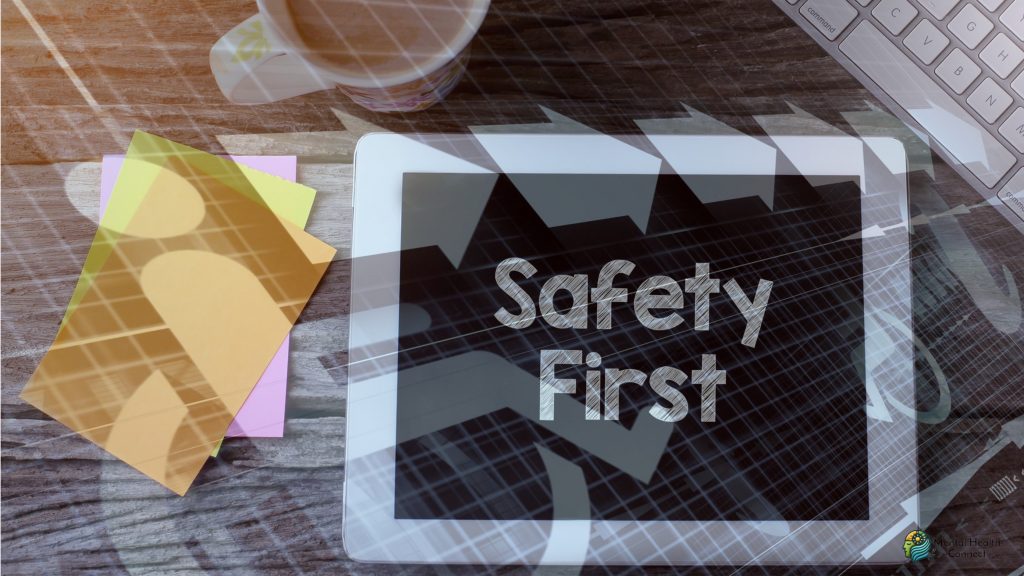Essential Office Setup Checklist for Mental Health Professionals

Creating a therapeutic space that promotes healing, comfort, and professionalism is crucial for mental health practitioners. Your office environment significantly impacts both your work efficiency and your clients’ experience. This comprehensive checklist will guide you through establishing the ideal mental health practice space that fosters trust, safety, and therapeutic progress.
Creating a Therapeutic Environment

The physical space where therapy occurs plays a vital role in treatment outcomes. A thoughtfully designed office can help clients feel safe, respected, and ready to engage in the therapeutic process.
Comfortable Seating Arrangements
Select seating that supports various therapeutic modalities. Consider:
- Supportive chairs with appropriate height and depth for different body types
- Seating options that allow comfortable conversation angles (not directly face-to-face if that feels too confrontational)
- Additional seating for family or group sessions when applicable
- Cushions, throw pillows, or comfort items that can be rearranged based on client preference
- A comfortable practitioner chair that supports good posture during long sessions
- Options for clients who may need specialized seating due to physical conditions
Soundproofing and Privacy
Client confidentiality is paramount in mental health practice. Ensure your space has:
- Sufficient sound insulation between offices and waiting areas
- White noise machines or sound masking systems placed strategically outside therapy rooms
- Well-sealed doors and windows to prevent sound leakage
- Appropriate distance between waiting area and therapy rooms
- Soundproof ceiling tiles or acoustic panels if necessary
- Music or ambient sound options that can be adjusted for client comfort
- Policies in place for handling unexpected interruptions
- Clear signage indicating sessions in progress
Lighting Considerations
Lighting significantly affects mood and comfort:
- Prioritize natural light when possible through windows with adjustable blinds or curtains
- Install dimmable lighting systems that can be adjusted for different therapeutic needs
- Avoid harsh fluorescent lights that can trigger migraines or anxiety
- Include task lighting for note-taking or specific interventions
- Consider light therapy options for seasonal affective disorder treatments
- Provide options for different lighting intensities based on client sensitivity
- Use table lamps or floor lamps for a softer ambiance than overhead lighting
- Consider how lighting changes throughout the day and seasons
Essential Clinical Tools and Resources

Assessment Materials and Documentation
Keep organized systems for:
- Standardized assessment tools and measures appropriate for your practice areas
- Intake forms and questionnaires in both digital and paper formats
- Progress tracking systems that align with your theoretical orientation
- Consent forms and treatment agreements readily available
- Outcome measurement tools appropriate for your client population
- Crisis assessment protocols and documentation
- Referral resources and community contact information
Therapeutic Tools
Stock your office with age and treatment-appropriate resources:
- Fidget items for anxiety management in varied textures and types
- Art supplies for expressive therapies (quality markers, paper, clay, etc.)
- Therapeutic games and activities organized by treatment goals
- Mindfulness and relaxation tools including meditation cushions, guided audio, or visual aids
- Visual aids for psychoeducation about common mental health conditions
- Emotion identification and regulation tools like feeling wheels or cards
- Communication tools for clients who may struggle with verbal expression
- Cultural adaptation tools and resources for diverse populations
Technology Infrastructure
Practice Management Systems
Invest in software that streamlines operations:
- Electronic health records system with secure storage and easy documentation
- Appointment scheduling software with automated reminders
- Billing and insurance processing tools integrated with your practice management system
- Secure client portal for communications, document sharing, and homework assignments
- Data backup systems with regular automatic updating
- Technical support resources for when systems malfunction
- Time-tracking tools for accurate session management
- Encryption and security features that comply with current regulations
Telehealth Capabilities
Even with in-person practice, maintain telehealth options:
- High-quality webcam and microphone for clear communication
- Reliable internet connection with backup options
- HIPAA-compliant video conferencing platform with screen sharing capabilities
- Professional background setting that maintains boundaries and confidentiality
- Proper lighting for virtual sessions positioned to illuminate your face naturally
- Testing procedures to ensure equipment functions properly before sessions
- Clear protocols for handling technical difficulties during telehealth sessions
- Resources for helping clients troubleshoot their own technical issues
Creating a Professional Business Presence
Reception and Waiting Area
First impressions matter for client comfort:
- Welcoming reception desk or check-in system that balances efficiency with warmth
- Comfortable waiting area seating with options for different preferences
- Privacy considerations for waiting clients including adequate space between seats
- Reading materials and/or subtle distractions relevant to your client population
- Clear signage and directions to restrooms, therapy rooms, and exits
- Accessible water, tea, or coffee station if appropriate for your setting
- Aesthetically pleasing decor that conveys professionalism without being sterile
- Welcoming elements like plants, artwork, or a small water feature
Administrative Efficiency
Ensure smooth operations with:
- Payment processing systems with multiple options (card, electronic, cash)
- Organized scheduling procedures with buffer time between sessions
- Client records management that balances accessibility with security
- Insurance verification protocols established before initial appointments
- Marketing materials and business cards that reflect your practice philosophy
- Professional website with appropriate information about services
- Systems for managing cancellations and rescheduling efficiently
- Clear financial policies including sliding scale options if offered
Safety and Accessibility Considerations

Crisis Management Readiness
Prepare for client emergencies:
- Crisis protocol documentation easily accessible to all practitioners
- Emergency contact information systems built into client records
- De-escalation tools and training for all staff members
- Security measures appropriate to your setting and client population
- Quick access to emergency services including local crisis response teams
- Safety plan templates readily available for clients in distress
- Clear evacuation procedures for natural disasters or emergencies
- First aid kit and basic emergency supplies
Accessibility Features
Make your practice inclusive for all clients:
- ADA-compliant entryways and facilities including ramps if needed
- Sensory-friendly options for neurodivergent clients including lighting and texture considerations
- Gender-inclusive restroom access with appropriate signage
- Clear signage for those with visual impairments including braille if possible
- Flexible seating options for clients with physical limitations
- Accessible parking with clear pathways to the building entrance
- Resources in multiple formats (audio, visual, written) for different learning needs
- Interpreter services available when needed
By thoughtfully implementing this comprehensive checklist, mental health professionals create therapeutic spaces that honor the sensitive nature of their work while providing the practical infrastructure necessary for effective practice. Remember that your office setup communicates volumes to clients about your values, attention to detail, and commitment to their care. A well-designed therapeutic environment becomes an active component of the healing process rather than simply a backdrop for it.
-
 How to Support Someone with OCDApril 17, 2025
How to Support Someone with OCDApril 17, 2025 -


Leave a Reply